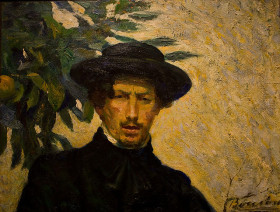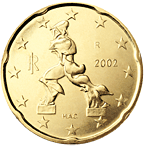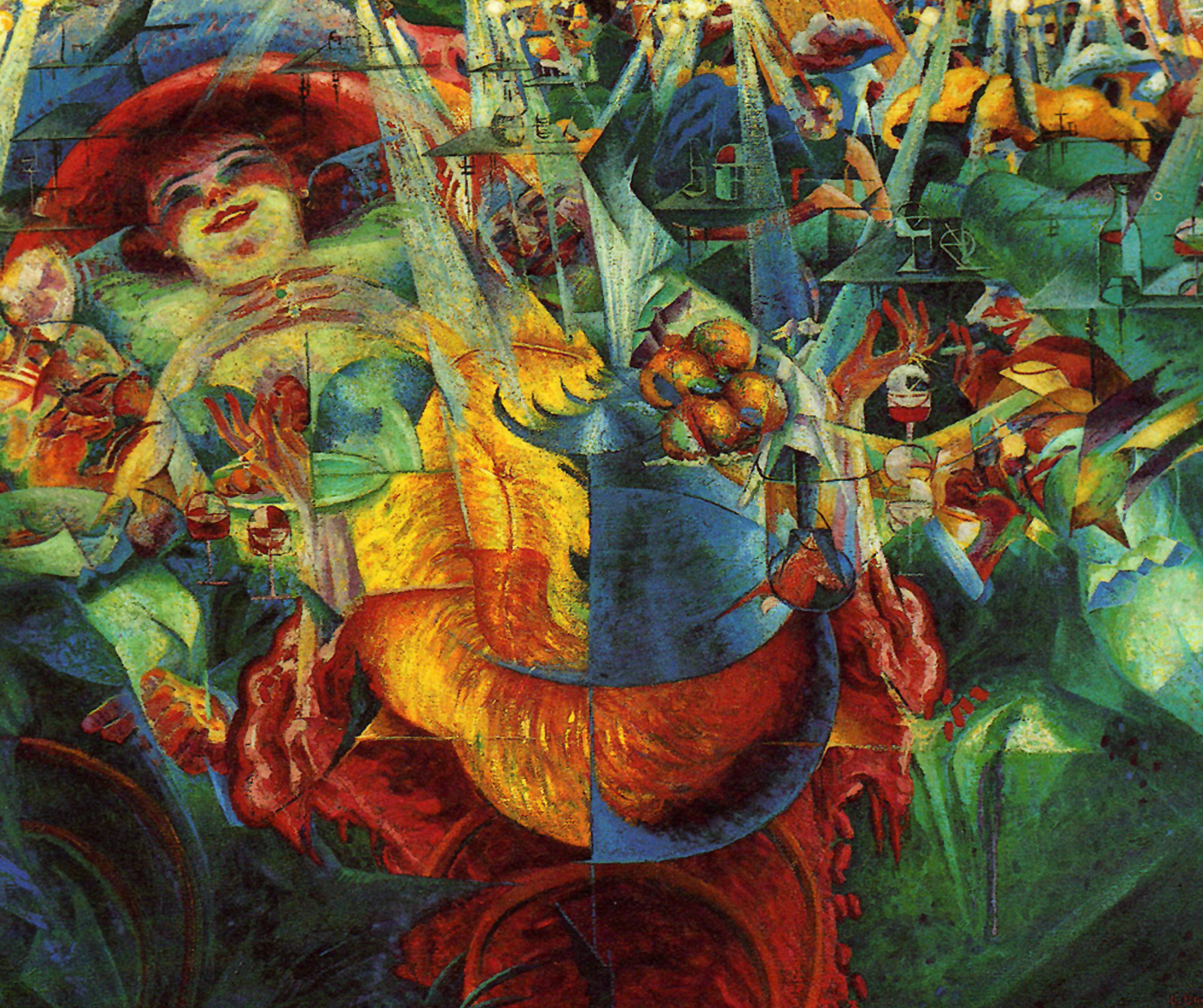 Futurism began in 1909 when Filippo Tommaso Marinetti published Futurist Manifesto in the popular Italian newspaper Gazzetta dell’Emilia and then in a French newspaper Le Figero. It declared ten articles about the emphasizing the speed, machines, violence, youth of modern times. It was phenomenon emerged firstly in Italy and by the release of Manifesto; many like-minded artists joined the community later on.
Futurism began in 1909 when Filippo Tommaso Marinetti published Futurist Manifesto in the popular Italian newspaper Gazzetta dell’Emilia and then in a French newspaper Le Figero. It declared ten articles about the emphasizing the speed, machines, violence, youth of modern times. It was phenomenon emerged firstly in Italy and by the release of Manifesto; many like-minded artists joined the community later on.
Umberto Boccioni was one of the very first to follow the movement. Today, he is remembered as a key-figure to flourish the movement of futurism.
Convergence of the Like-minded
Umberto Boccioni was born in 1882 in the land of Reggio Calabria. At early age, he was more devoted to drawings instead of paintings. After studying art at the Scuola Libera del Nudo in 1898, he attained fine knowledge of drawing.
Then after, in 1901, he met a like-minded artist Gino Severini, who also became a futurist and prominent personality in the art-movement. Together, they shared different ideas, thoughts and mutual interests. Together, they became students of Giacomo Balla, a divisionist artist from Turin, Italy. Impressed by their mentor’s artistic ability Gino Severini wrote about him in his biography: “It was a great stroke of luck for us to meet such a man, whose direction was decisive of all our careers.” Apparently, Giacomo Balla’s instructions helped both artists at great value.
Another important person came across during the time was the famous poet Filippo Tommaso Marinetti. As mentioned above, he was the author of the Futurist Manifesto which declared a new branch in painting and the described the rules of futurism which differentiated the art from other branches. They met in Milan in 1907 before the manifesto was published. A less-known fact is that the Manifesto was not written alone by Giacomo Balla, but Balla and Boccioni gathered with other fellow futurists to construct the manifesto.
Major works: Paintings and Sculptures
Initially, attracted toward paintings, Boccioni got influences of the art of sculpting while his visit to multiple studios in Paris around 1912. Though, on shelf the line of painting-works is far longer than the sculptures.
Painting
At early stage, Umberto Boccioni’s focus in the painting was drawing and then sketched and painted portrait. Mostly his mother was his model for many portraits and paintings including the Three Women in which his mother, sister and his long-time lover; all posed for the portrayal. Critics called it the combination of strength, melancholy and love.
During the time, his style of painting lingered between pointillism and impressionism. In his painting, The Morning (1909), he added some essence of his mentor Giacomo Balla’s Divisionism style.
Later on, as he ascended towards futurism, he left divisionism and pointillism aside. His first purely futurist work was La Risata (The Laugh) in 1911. (Shown below)
He painted a line of other great paintings including The City Rises, Dynamism of a Cyclist, Elasticity and Horizontal Volumes. His much revered series was called ‘State of Minds’. It was series containing three paintings: The Farewells, Those who go and Those who stay. The series was portraying three different angles of a scene from a train-station when guests apart from the host. In a very chaotic and cluttered but in sane way the three paintings represents the mindsets of those three scenarios.
Sculpture
His interest in sculpture aroused whilst his visits of the famous studios of Paris such as Braque, Archipenko, Brancusi and Medardo Rosso. He even show-cased his sculptures at the Gallerie La Boetie. His two famous sculptures are Unique Forms of Continuity in Space (shown below) and Development of a Bottle in Space. For the first sculpture he said his goal of the work to attain “synthetic continuity” instead of the “analytical discontinuity” which he found in artists such Frantisek Kupka and Marcel Duchamp.
 His first work is become so famous that it was selected for the backside of Italian 20-cent Euro coin.
His first work is become so famous that it was selected for the backside of Italian 20-cent Euro coin.
One fact about the sculpture is that it was made in plaster and wasn’t converted in bronze until 1931 long after artist’s death.
Unfortunately, the World War I ignited in 1914 and he had to join the army in 1916. While riding a horse in the army camp, he fell down and due to some fatal injuries, died on the next day at the early age of 33.
In his memoir, New York Times art critic wrote:
“In the brief life span of the Italian Futurist movement, the short-lived Umberto Boccioni was a blazing comet…”


